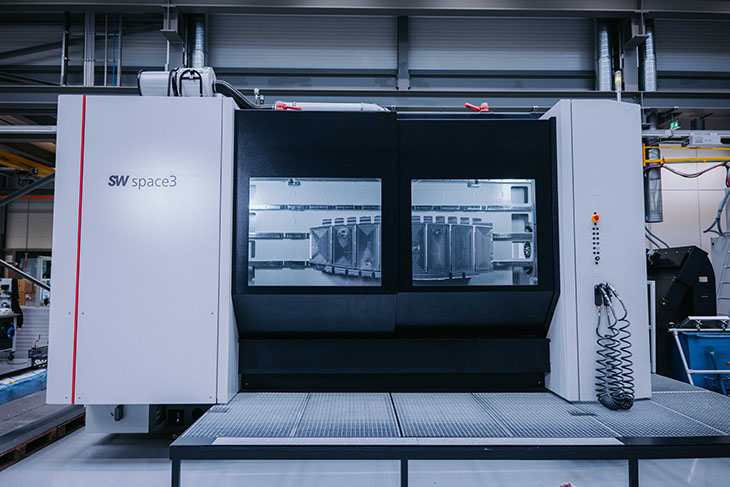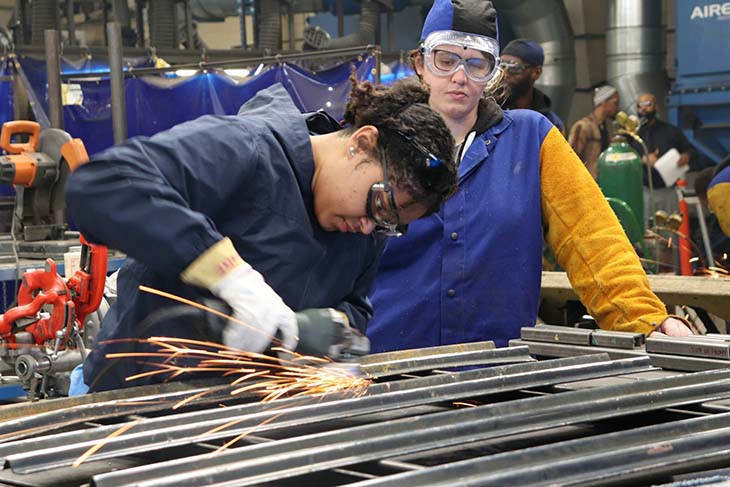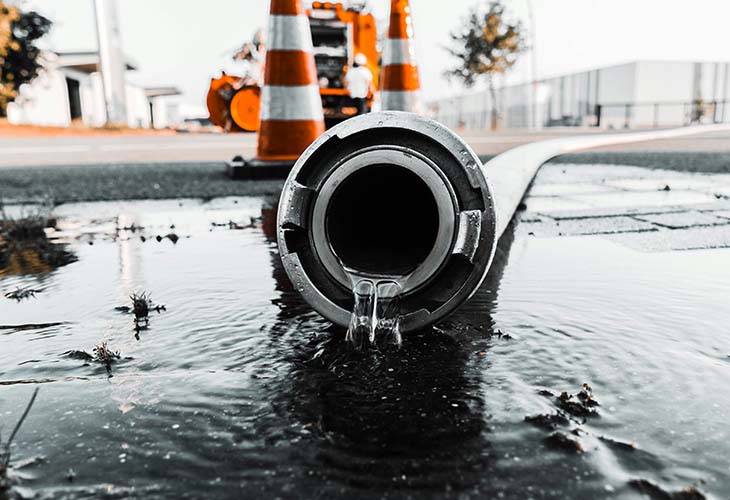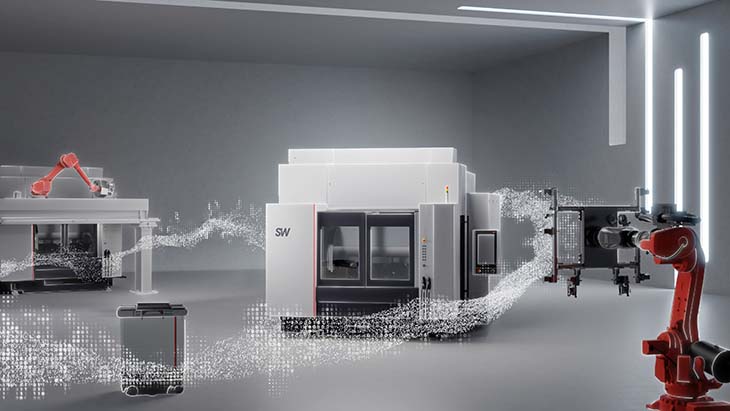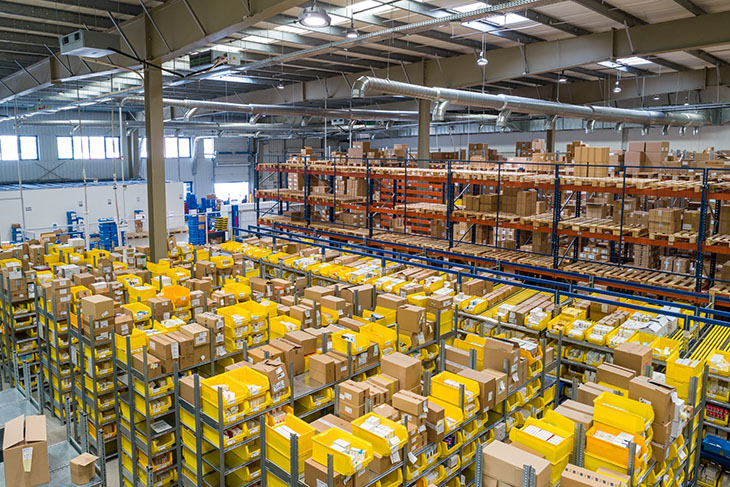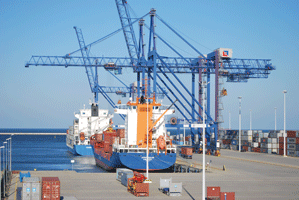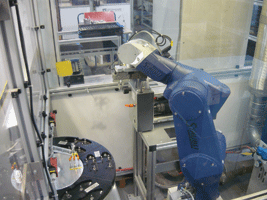Relief of the sliding bearings by hollow shaft and material recesses in the impeller
In China's largest steelworks in Shanghai, the sintering of iron ore requires sufficient process air to be drawn through the sinter strand sized 600 m². This is necessary to make sure that the raw material mixture is burnt uniformly and that the sinter has the quality appropriate for the blast furnace. The old induced draught fans, however, were too small to generate the negative pressure necessary for the sinter bed of the new plant. So Baoshan Iron & Steel Co., Ltd. entrusted TLT-Turbo GmbH, a specialist for solid heavy-duty fans, with the engineering and production of two induced draught fans dimensioned according to the requirements. The radial flow fans delivered in December 2016 with a drive power of 12,300 kW belong to the largest fans in the world and thus entailed several challenges to construction.
In 2016 Baoshan Iron & Steel belonging to Baosteel Group completely restructured their works in Baoshan, in the most Northern urban district of Shanghai, to meet the demand for steel products that has increased for years. Their new sinter plant runs 24 h at about 350 days a year and has an exceptionally large suction surface of 600 m². It consists of individual grate carriages being perforated at their bottom and slowly moving the mixture of ore fines, slag forming materials, fuels, return fines, lime and water to the discharge point. The sintering process is initiated by the ignition of the coke breeze contained in the material. Air is sucked through the mixture by aid of the induced draught fans and thus the burning zone moves downward through the material. "The heat-wave, which runs through the sinter bed between ignition and discharge, causes the iron ore fines to fuse partially making the feedstocks become pasty and agglomerate to lumps of sinter", Ralph Mansius, TLT's sales manager of the business unit Application Industry, describes how the plant works.
The inlet temperature of the air is about 150 °C. TLT's fans installed in Baoshan, however, have been designed for a maximum temperature of 250 °C to withstand even process-related fluctuations. A high negative pressure is necessary to draw the hot process gas uniformly through the moist mixture. The negative pressure is 19,500 Pa at the suction nozzle of each fan and generates a gas stream of 500 m³/s per ID fan. "It also allows to overcome the pressure losses that are to be attributed to the electrostatic precipitator used for gas cleaning that has been installed upstream to the fan on grounds relating to environmental protection as well as wear and tear", Mansius explains. A 10 kV asynchronous motor delivers the required drive power of 12,300 kW. It is speed controlled for energy efficiency reasons, since this is how to achieve the best efficiencies in partial load points.
The rotor ‒ a challenge to logistics and construction
The rotor consists of a double-inlet impeller with a diameter of 4.6 m and a shaft with a total length of 7.6 m. Such huge dimensions required an enormous logistical effort on the part of the manufacturer. Hence, the rotor could be transported from the works to the port of Hamburg only by water. Even the engineering presented a challenge: "We had to reduce the rotor weight as much as possible to comply with the necessary distance to the shaft's bending critical speed of 35 percent. A hollow shaft was used to this end and material was cut out at certain points of the impeller", Mansius reports.
These actions, however, were not sufficient to ensure smooth operation. "The large mass resulting from the dimensions of the rotor combined with the operating speed represents a considerable load so only a sliding bearing assembly can be used", Mansius says. The necessary oil supply of the two induced draught fans is effected via a common tank with a volume of 10,000 l. In addition, two high tanks at 3,000 l have been installed to ensure lubrication even during a blackout. The switchover is effected via a non-return valve to the effect that even during standstill of the oil pump the motor and bearing assembly will be lubricated for another 30 min to avoid damage.
Due to the abrasive qualities of the sinter dust that is still in the gas despite the upstream electrostatic precipitator, the induced draught fans furthermore had to be equipped with a wear protection. For that reason screwable wear plates have been fixed inside the impeller to protect the main blade. In the event of a maintenance those plates can be easily substituted. Since the housing is less subject to abrasion, in this case a welded-in, non-replaceable wear plate is sufficient.
TLT's scope of services in addition to induced draught fans plus motors also comprised the engineering for the transition piece on suction side and the silencer on discharge side.
Reproducible product quality as a result of a reliable control system
"If the air volume or temperature are not correct, the sinter quality will decrease and thus a consistent and reproducible production of iron will not be possible in the downstream blast furnace process", Mansius explains. As a preventive action the volume flow and pressure in the main air flow are continuously measured. The temperature is controlled by holding the air flow at the pre-set value via speed control or by the control valves at the fan and by adjusting the wind boxes situated under the strand. The point where the material will be completely burnt ‒ ideally near the end of the sinter strand ‒ can be settled by the strand speed. After cooling, the sinter is fed to the blast furnace process and reduced to molten pig iron, which is then converted into crude steel.
Find out more on www.tlt-turbo.com.










